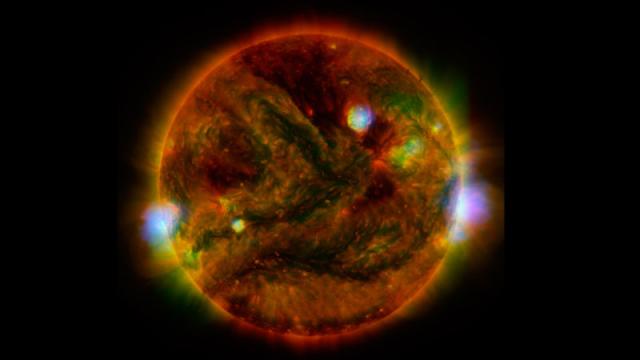Ever feel like an insanely high powered laser could solve your problems? Fusion researchers sure do! And now, they may have the blueprint they have been searching for. New theoretical work indicates it could be possible to build a laser that heats materials to temperatures hotter than the center of the sun — within a millionth of a millionth of a second.
Fusion, the nuclear reaction that powers the stars, occurs when hydrogen atoms slam together at approximately ten million degrees Celsius to form helium. In theory, the production of energy via atomic fusion could be self-sustaining and virtually limitless. But first things first, we need an efficient way to heat materials up to those crazy hot temperatures.
The new method — if viable, nobody’s built this laser yet — would heat atoms about 100 times faster than rates achievable in fusion experiments at Lawrence Livermore National Laboratory, home to the world’s most high-powered laser system. Published today in Nature Communications, the discovery exploits laster-induced “electrostatic shockwaves” that, if paired with the right material, are able to heat up ions directly.
When you shine a laser on something to warm it up, what you’re really doing is transferring energy to some of the electrons in the material. These electrons, in turn, pass energy to the charged atoms (called ions) that make up the bulk of the matter. But if we could cut out the middleman and heat up ions directly, we may be able to achieve the extreme temperatures required for fusion much more quickly.
One side effect of beaming a high-intensity laser at a material is the production of “electrostatic shockwaves.” For a long time, physicists have been aware that these shockwaves cause ions to accelerate without getting any hotter. But using advanced supercomputer modelling, the team behind the new study shows that it should be possible to generate a shockwave that heats ions in a solid lattice directly.
To do so, you need a dense material that contains different types of ions that accelerate at different speeds. This produces friction, which in turn causes the entire solid material to heat up very, very fast.
“It’s a completely unexpected result,” lead study author Arthur Turrel said in a statement. “One of the problems with fusion research has been getting the energy from the laser in the right place at the right time. This method puts energy straight into the ions.”
Sure, but will the new discovery actually contribute to the development of fusion power? We’ve been hearing about this boundless, just-over-the-horizon energy source for decades, and it’s easy to get a bit cynical.
“If, and this is a big if, the mechanism can be applied to solid targets as employed in inertial fusion experiments, it may prove very important,” University of Minnesota physicist James Kakalios, who was not involved with the study, told Gizmodo.
I guess that means we’ll have to wait and see. In the meanwhile, the race is on to build the world’s most epic laser. Just another day in physics.
[Read the full scientific paper at Nature Communications h/t Imperial College London News]
Top image: Our glorious Sun, via NASA/JPL-Caltech/GSFC/JAXA
